Centipedes and millipedes are both arthropods from the group myriapoda. This is the only similarity between them even though they are often mistaken to be similar. Centipedes – meaning a hundred legs – are members of the class chilopoda which originates from two Greek words meaning lips and foot. On the other hand, millipedes – meaning a thousand legs - belong to the diplopoda class. The Greek meaning of diplopoda is double foot. Since both the creatures have been put into different scientific classes, there are a number of variations between them including their physical traits, habitat preferences, diet and other factors. These differences are discussed below in detail.
Physical characteristics
Millipedes and centipedes differ from each other through the following physical traits.
- Although these arthropods do not possess as many as a thousand or a hundred legs as suggested by their names, the number of legs possessed by millipedes is larger than that of centipedes. In case of the latter, there is a single pair of legs per segment of the body. On the other hand, apart from the first three body segments, each segment of the body of a millipede consists of two pairs of legs.
- Both possess elongated bodies with exoskeleton. However, in the case of millipedes, the body is rounded while centipedes have flattened bodies.
- The antennae attached to the head of the arthropods are long segmented in the case of centipedes. They serve the function of smelling as well as feeding. On the other hand, millipedes possess short segmented antennae which serve as sensitive sensory organs.
- The legs of a centipede extend outwards from the sides of the body and trail backwards. In the case of millipedes, the legs do not extend out and are in line with the arthropod’s body.
- Right behind the head of a centipede are two modified legs in the trunk segment which are poisonous. These venomous legs are used to sting and capture prey. However, millipedes do not possess any venom and do not bite.
Habitat
Millipedes and centipedes show different preferences with regard to their choice for habitat. Both the creatures are vulnerable to desiccation and, therefore, choose moist environments to live in. However, millipedes are mostly found around decaying vegetation while centipedes can be found in a variety of places including rotting logs, fallen leaves in a garden and damp places in a house.
Diet and Feeding Habits
Differences between the two arthropod classes with respect to their diet and feeding habits are discussed below.
- Centipedes are classified as omnivores since they feed on both vegetation as well as small animals. On the other hand, millipedes are detritivores which consume decaying organic matter.
- The diet of centipedes includes small insects, spiders, birds and even reptiles along with leaves, grass and other type of easily available plant matter. On the other hand, the diet of millipedes consists of dead and decaying plant matter and animals as well as animal feces.
- Unlike millipedes, centipedes possess venomous legs which are used to kill prey. These legs are termed as maxillipeds.
- Owing to their scavenging nature, millipedes are termed as microbial decomposers. They play an important part in nutrient cycles in the soil. On the other hand, centipedes perform no such role in the environment.
Defense Mechanisms
Both the creatures also differ on the basis of their defense mechanisms. These mechanisms are discussed below.
- Although it is not life threatening for humans, the venomous legs of a centipede can kill small insects and other animals which they feed on. Millipedes do not contain any venom.
- Unlike centipedes, millipedes can squirt potential predators with a chemical which is not poisonous but noxious for most creatures. This chemical substance is produced by glands located along the trunk of millipedes.
- Millipedes also exhibit another defense mechanism which is not shown by centipedes. It involves curling of the body in case some danger or presence of a predator is detected.
Other Differences
Miscellaneous other differences between the two arthropods are mentioned below.
- With a smaller number of legs which are comparatively longer, centipedes can move faster as compared to millipedes. Centipedes can move in a sprint over a short distance while chasing a prey or moving away from a predator. On the other hand, millipedes can only crawl slowly as they forage around for food in the soil.
- A male millipede mates with its female counterpart in order to reproduce. On the other hand, male centipedes deposit sperm externally which is then found by mature females for fertilization.
- Since centipedes possess dorsoventrally flattened bodies, they exhibit flexibility. On the other hand, the sub-cylindrical shape of a millipede makes it rather rigid.
- The legs of a centipede articulate laterally with its body. On the other hand, the legs of a millipede articulate mid-ventrally with the body so that it can be pushed forward through the soil while the arthropod scavenges for food.
All of the above mentioned differences make millipedes and centipedes two distinguishable creatures despite being classified into the same scientific grouping of arthropods.
Do you find this article interesting and informative? If yes, how much? Also, give your precious suggestions to improve it further.
Latest Mammals
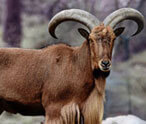
Types Of Goats
Goat is a mammal that belongs... read more
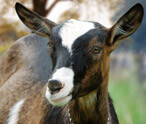
Goat Facts
A domesticated form the wild goat of...read more

Giraffes Facts
Giraffes are creatures with extremely...read more
Latest Birds
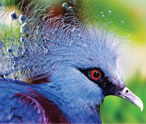
Victoria Crowned Pigeon
With its name...read more
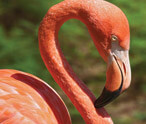
Information About Flamingos
Flamingos are...read more
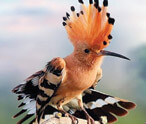
Hoopoe Bird
Famous for its distinctive crown of...read more
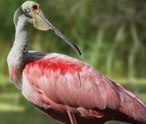
Roseate Spoonbill
The beautiful Roseate Spoonbill...read more



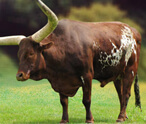

















Largest Birds of Prey in the World by Size and Weight
Also called raptors, the birds...
List of Birds That Fly in V Formation
Did you ever feast your eyes on the amazing phenomenon...
Birds of Prey List
A bird of prey is also known as a raptor or a hunter. It belongs to the group of...
Millipedes Vs Centipedes
Centipedes and millipedes are both arthropods from the group...
Difference Between Warm Blooded and Cold Blooded Animals
Every living organism...
Top 10 Extremely Dangerous Insects
The insects have been grouped in class 'insecta' of...
Sheep Vs Goat
The goat and the sheep are related to each other through the same family. They...
Animals with Blue-colored Blood
Humans and other vertebrates have red-colored blood running...
Birds, Mammals And Reptiles
Before coming to the question of common ancestry of birds...